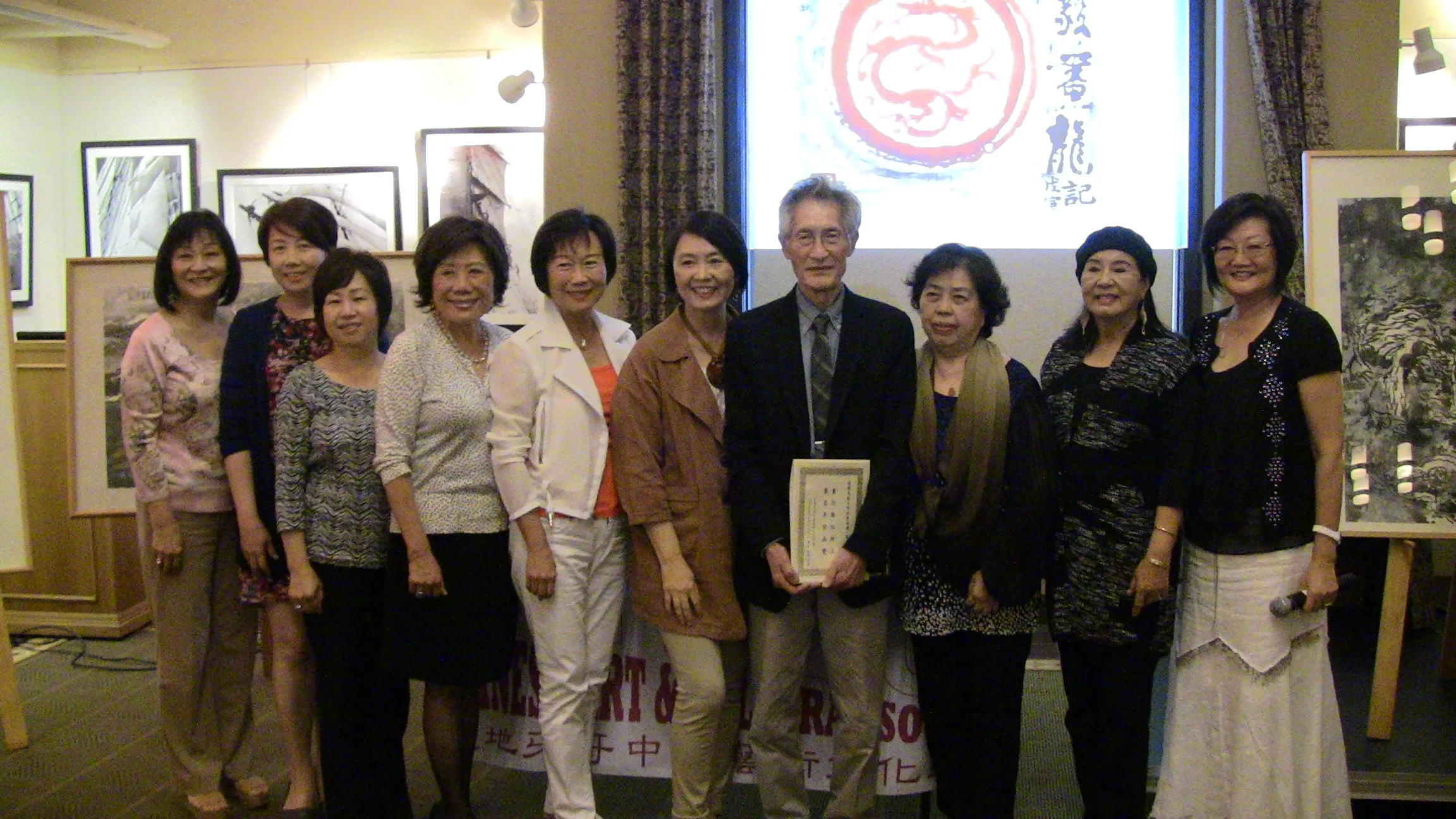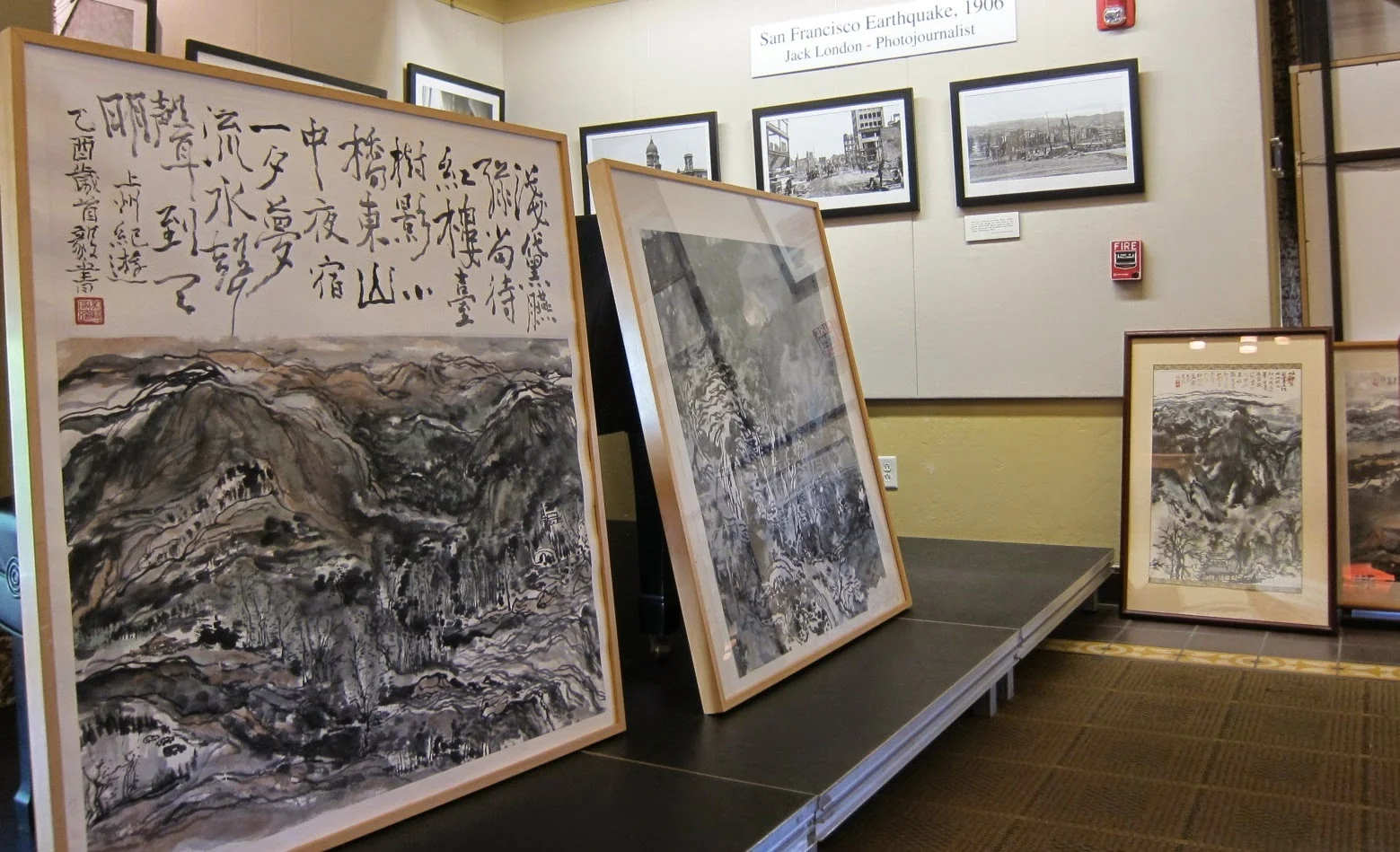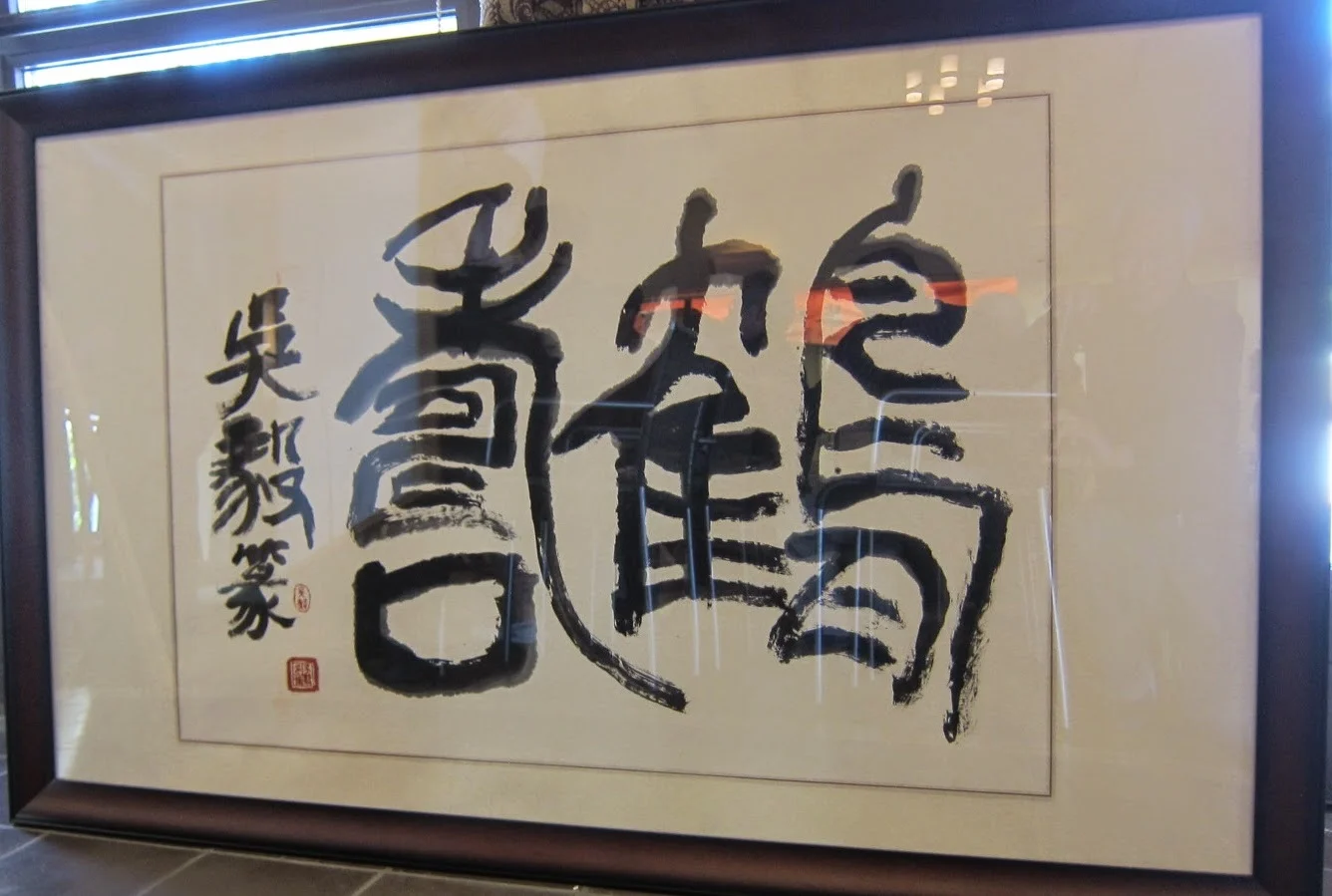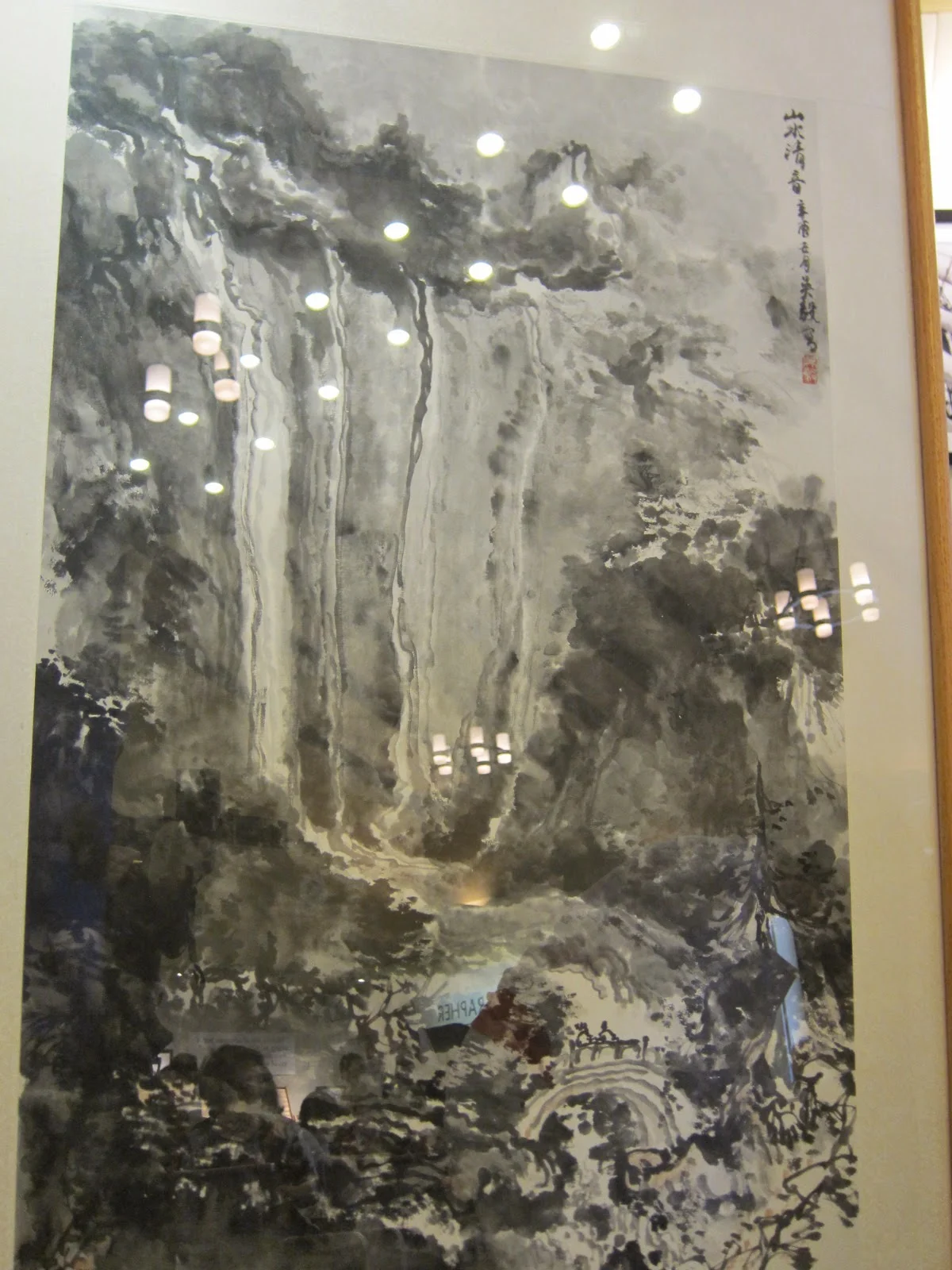A very interesting program by the Chinese master painter Wu Yi included the pleasure of viewing a display of six of his original works, two short videos biography and numerous slides illustrating the wide range of his subject matters. He spoke of the deep-seated influence on his work of the Chinese concept of “Xiang Thought” that traces back to ancient times before the development of writing when images were used to record observations and events. The thoughts that were expressed in images evolved into the earliest Chinese characters that incorporated these images into a system of writing. As Chinese ink paintings developed along with calligraphy, the Xiang Thought processes were embedded within the ink paintings, encompassing the long history of Chinese culture and philosophy and a reverence for nature. Wu Yi explained that these elements nourished his understanding of the natural world and allowed him to express the Three Perfections of poetry, calligraphy and painting through his own spirit using brush, ink and paper.
水墨大師吳毅帶來了六件大師原作,兩個短的自傳式的影片及大量的投影片, 展出了許多廣泛而不同主題的畫作。吳毅談及他的作品深受中國象思維觀念的影響。"象思維"可 追溯到遠古時代,在書寫的文字發生之前,那時是用圖像來觀察並記錄所有的事件。後來用圖像表示的觀念又演化入了中國最早期的文字之中,包含了圖像意識進入 了書寫的系統。當中國水墨畫的發展是跟隨著書法而來,所以象思維的演化也就深埋在水墨畫之中,縈繞著中國悠久歷史的文化及哲學思想,表達了對大自然的崇 敬。吳毅解釋了這些思想滋養了他對大自然的了解和讓他經由他自己的心靈,用筆、墨、和紙,表現了詩,書,畫三絶的畫作。






